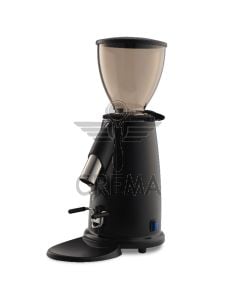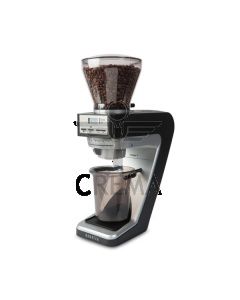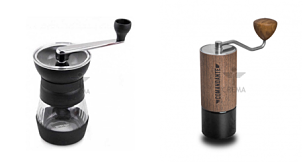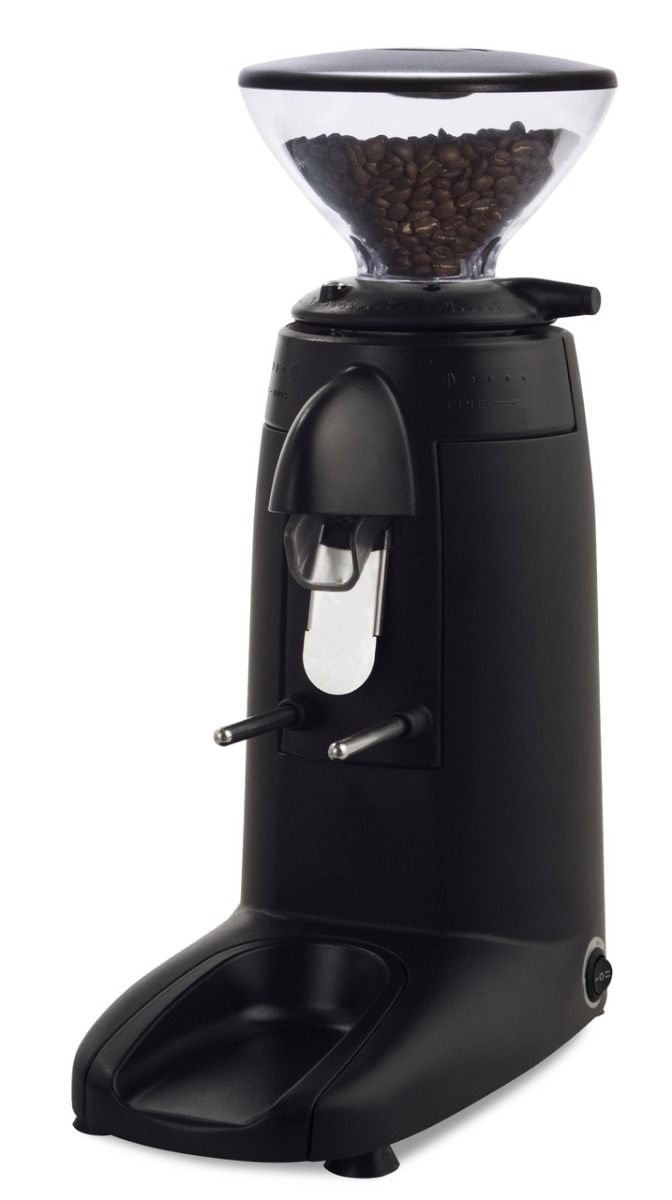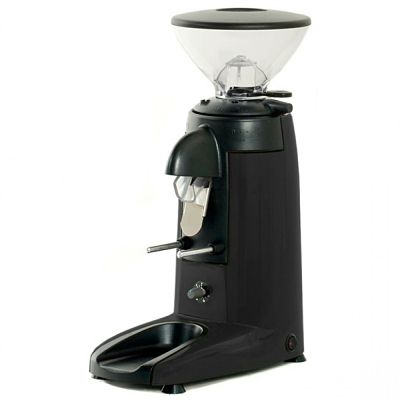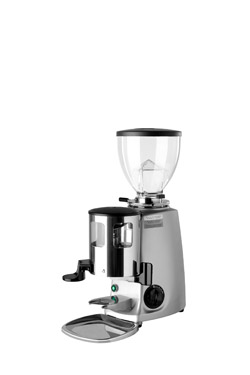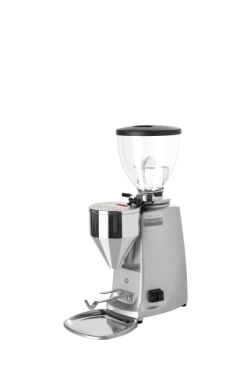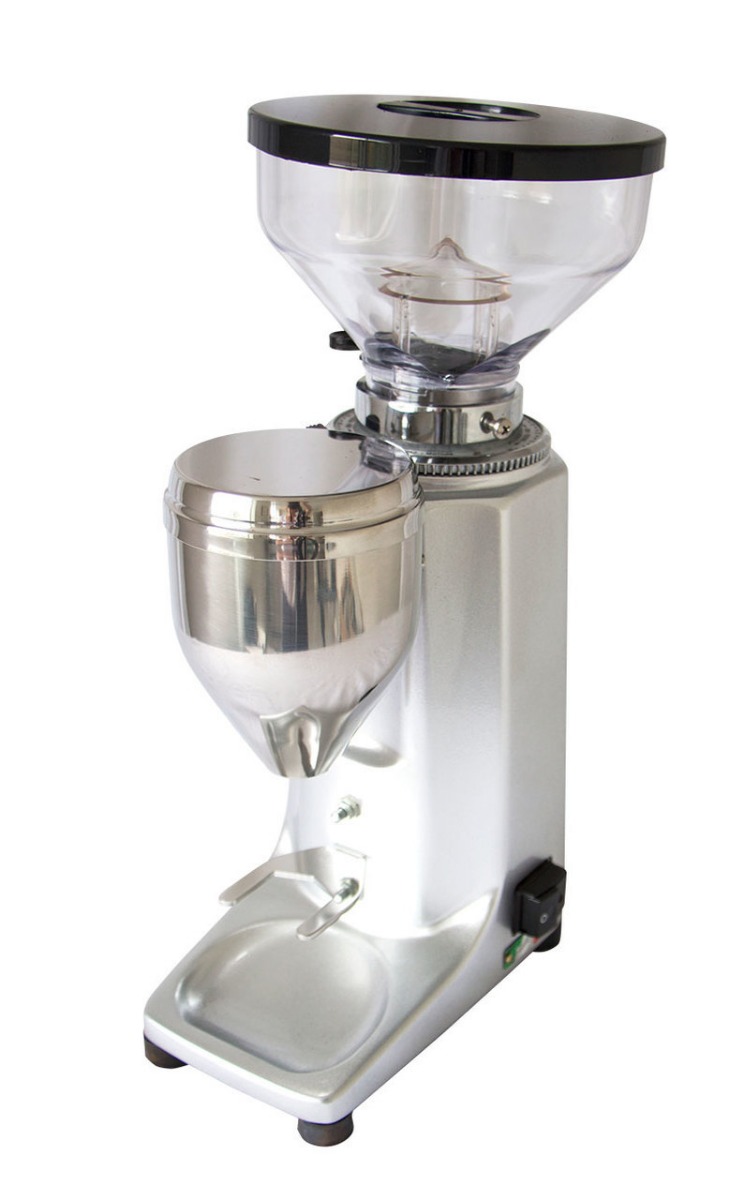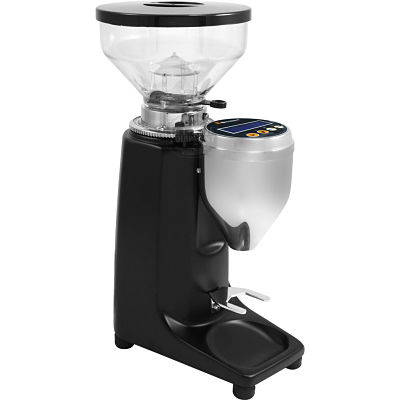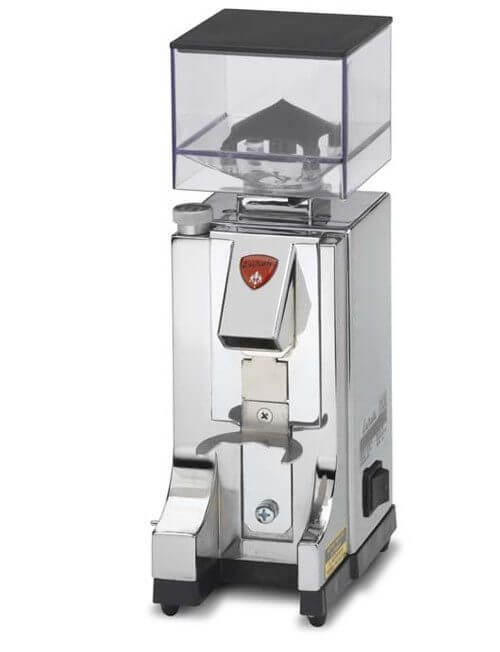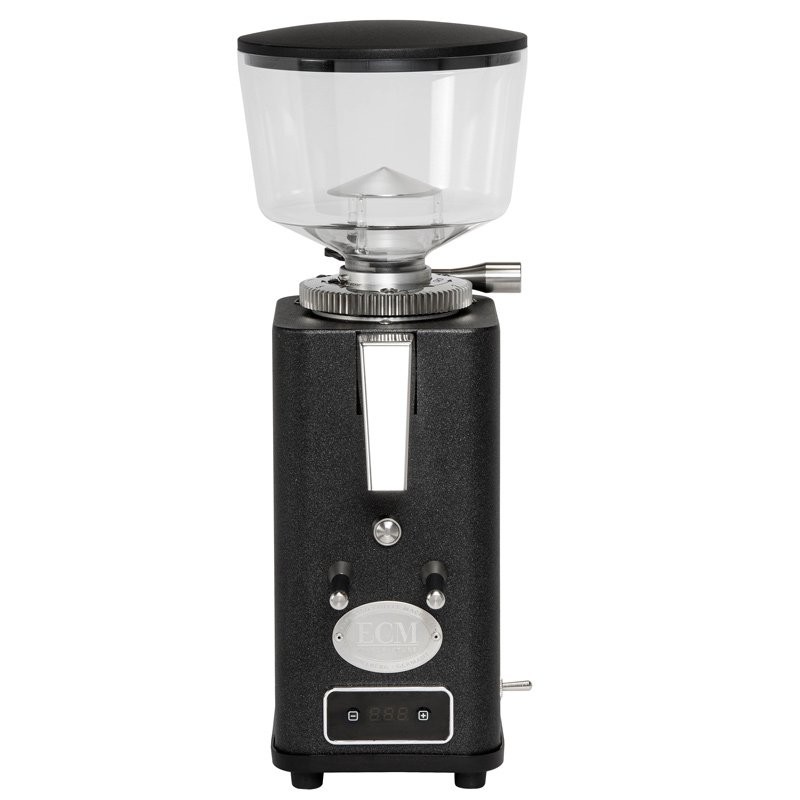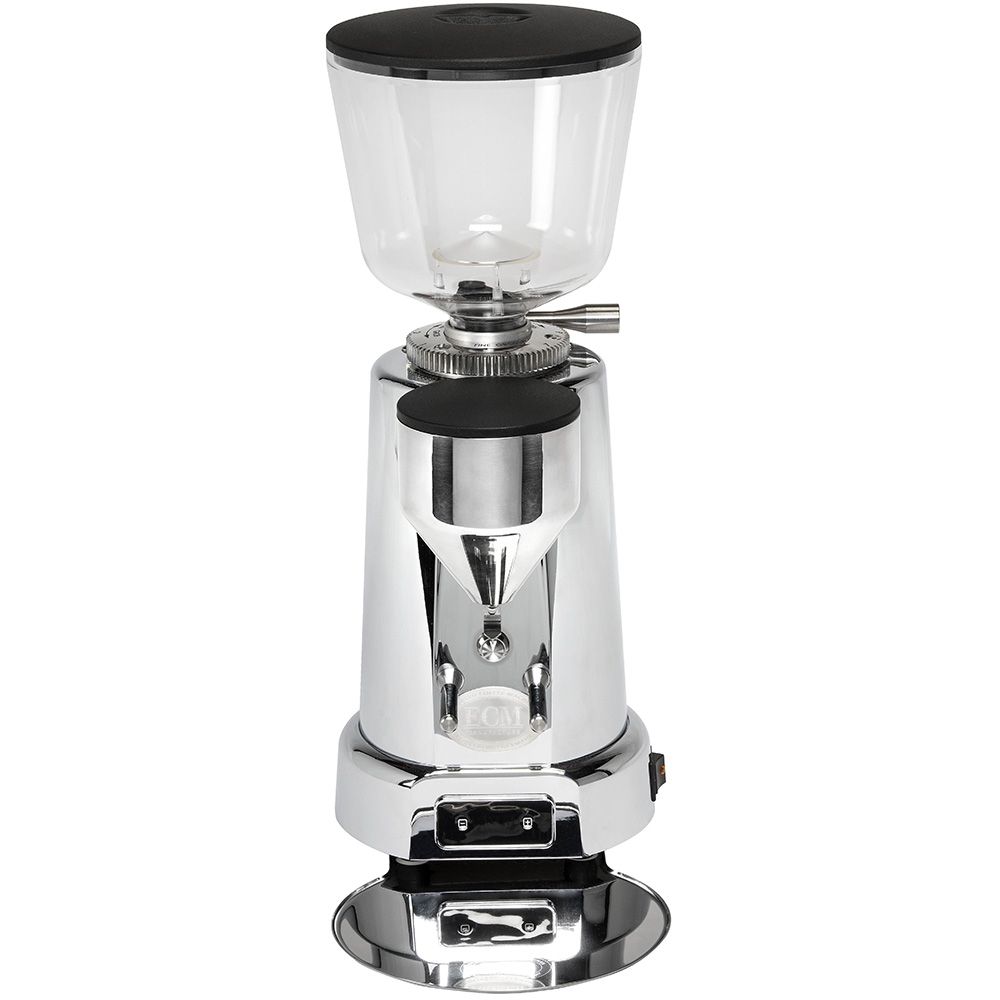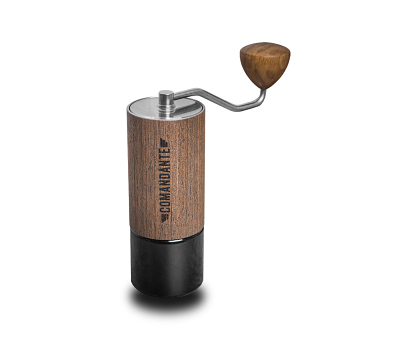The Ultimate Coffee Grinder Buyer's Guide
- 5 Apr 2018
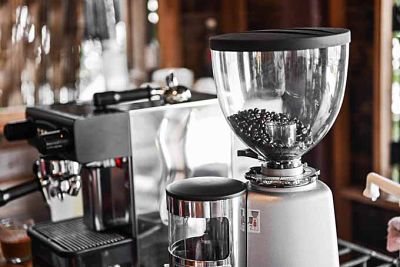
If you have been purchasing your coffee in already-ground form, or having it ground to take home by your local roaster – this article is for you. Many are putting off the purchase of a coffee grinder simply because the availability of pre-ground coffee exists, and they’re so used to the taste of it that there doesn’t seem to be a problem that requires a home grinder as the solution.
While freshly pre-ground coffee can be great for some purposes – mostly batch brewing (like cold brewing or filter machines) and where it will all be utilised fairly immediately – for anything else it falls well short of delivering peak flavour.
Once our customers have established a routine and taste (more like an addiction) for freshly roasted coffee, we are always hopeful they will invest in a coffee grinder for home to continue levelling up their ultimate brewing experience.
Having access to your own coffee grinder gives you freedom and flexibility in your brewing and a substantial increase in your coffee quality that simply can’t be ignored. Once our customers get their grinders home, they can’t believe they ever lived without one.
Why you should buy a coffee grinder for the home
The PROS column for owning a home coffee grinder fills up quickly, with very few things to add to the CONS column – if there are any at all! The following points are the big hitters in favour of owning a coffee grinder and do a good job of speaking for themselves:
· Increase your coffee quality
Grinding your beans fresh will ensure the best possible coffee quality. You will be extracting maximum coffee solubles with minimal coffee degradation caused by the passage of time and exposure to environmental elements. The sorts of things that can degrade your coffee over time include:
o Moisture
o Oxidation
o Contamination
o Carbon Dioxide depletion
o Being subjected to excessive sunlight or heat
o Coffee oil going rancid
· Extend your coffee shelf life
Keeping your roasted coffee beans in their whole-bean form and stored correctly until you are ready to use them will extend the shelf life right up to the maximum 6 week mark. Using an airtight storage container like the Airscape or Friis Coffee Vault can help. Buying coffee beans that are already ground will usually only have a 10-14 day shelf life before they begin tasting bland, funky and bitter.
· Increase your brewing flexibility
Owning your grinder allows you much more room to move with your brewing. You can choose to switch up your grind size if you want to use more than one brewing method, going from super-fine for espresso, to super-coarse for French Press. You also only need to grind as many beans as you need each time you brew, keeping the majority of your roasted coffee beans in their whole form. You can also choose to make grind size adjustments whenever you need to, to keep you coffee brewing just-so and experiment with what works best for your palate.
· Be a freelance coffee drinker
Never again be beholden to one coffee shop! If you get your coffee beans ground by a particular café or roaster, or you buy them pre-ground off the shelf – chances are that you are limiting yourself. Not all cafes, roasters or wholefoods stores offer grinding services, or sell pre-ground coffee – but almost all of them sell whole coffee beans. By owning your own grinder, the world of coffee beans opens up dramatically. You can get out there and buy your coffee beans with whimsy and abandon – nobody puts coffee grinder owners in the corner!
What is the best coffee grinder for home use?
A brief look around in stores or online might have you feeling overwhelmed by the huge amount of choice there seems to be when it comes to home coffee grinders. There is definitely a huge array of them available, all of them in seemingly different styles and price ranges. The best place to start – aside from giving our experts at Crema Coffee Garage a call – is to spend some time narrowing down some factors, to help you slim the field. These are some of the decisions that can help you do that:
· What kind of coffee do you brew?
Depending on the kind of cup O’ Joe you’re making in the morning, you will want to choose a grinder that performs best for that style of brewing. A grinder that performs well for espresso coffee can be a very different set up and price range that a coffee grinder that does well for alternative brewing for things like cold brew, French press and stovetop espresso. Have a good think about which brewing style you need your grinder for, and that will help immensely in the decision making process.
· How much coffee are you grinding at a time?
The dose amount of coffee you need to grind – 20g for your Flair, or 250g for your cold brewer – will have an impact on the type of grinder you choose. Home coffee grinders made for espresso-style coffee and other smaller doses will be built for that purpose, with specially selected burrs and motors, and may not easily adapt to larger amounts of coffee. It would also have a motor built to withstand hard work! Different styles of grinders come in different price ranges, due to the costs involved in manufacturing them, so it’s important to think about your intended spend.
· What is your coffee grinder budget?
The coffee grinder market is huge, and even when you have narrowed down the type of brewing you want it for and how much work it’s going to do – it’s still a lot to sort through. Setting yourself a budget to work within can help immensely. Even if you end up a little over or under budget, it still aids in narrowing your choices. The kind of budget you choose will depend on a number of factors. Generally speaking, the cost of a grinder is tied closely to that of its quality – but this is not always the case. As many of us know, sometimes we are paying for the brand name, or a particular aesthetic, rather than the performance quality of the coffee grinder. Getting help from a coffee expert in-store can be an invaluable service; our staff members have the industry knowledge to know unexpected bargains when they see them!
If you’re still unsure of where to start, we suggest you look at a good mid-price budget for a coffee grinder, where you land somewhere in the middle on quality and performance and could spend somewhere around $300-$900.
A popular home coffee grinder is the BARATZA SETTE 270WI COFFEE GRINDER, thanks to its unique built it dosing scales.
Best coffee grinders for espresso coffee
The type of coffee grinder you choose for making espresso coffee is very specific. It needs to be one that can grind coffee on a very fine setting with a high level of consistency, and have the ability to be adjusted. Because the amount of coffee you use for each espresso shot is so small, issues with quality and consistency in the grind are much more noticeable flavour-wise. The small size of the dose also makes it more prone to being affected by environmental factors – air humidity (moisture) in particular – and therefore requires a grinder that can adapt and change grind size where needed.
Coffee grinders for espresso are widely available, being one of the most popular brewing methods in Australia and worldwide. The choices available to you are immense, and while the competition in this market is great for pricing – it makes it hard for customers to choose in the first place!
Coffee grinders for alternative brewing
Alternative brewing is a blanket term that describes all styles of coffee brewing, with the exception of espresso. This is because espresso is by far the most popular way of making coffee worldwide, relegating any other brewing method to be termed “alternative”. When we talk about alternative brewing grinders here, we tend to mean those that perform well when grinding either larger amounts or coarser grinds – or both!
Coffee grinders for French press or cold brew have different strengths compared to coffee grinders for espresso. Other types of alternative brewing that you might be catering for include but are not limited to;
· Stovetop espresso
· Cold drip
· Pour Over
· Filter batch brewing
· Flair Espresso
· Aeropress
A great choice for an alternative coffee grinder would be the Fellow Ode or WPM.

What should I look for in a home coffee grinder?
There certainly are quite a few decisions to be made when setting out on a home coffee grinder purchase, and it can be information-overload territory!
Below we have listed some important considerations to help guide you toward the right grinder for you:
· How much space do you have for a coffee grinder at home?
Considering how much space you have for your coffee grinder to live is important – kitchen real estate is limited! The space you are working with will naturally be of great importance when it comes to your grinder purchase. It’s not just the dimensions of the grinder that need to be factored in, but the space around the grinder needed for functionality. If you have cupboards above your kitchen bench where your grinder is positioned, you don’t want a grinder so tall that it’s difficult to refill in such a small space.
You may already have a home coffee machine and are looking for an aesthetically matching grinder to go with it. The height & width of your coffee machine, not just its physical features, can affect your decision as well. Make sure you are equipped with those figures before making your decision.
· Do you want to travel with your coffee grinder?
If the answer is yes, then you might want to look at investing in a high quality hand grinder. Although hand grinders might take longer and be a little more physical work, they don’t rely on electricity, and are usually relatively small making them the perfect travel companion to go with your Espro Ultra-Light Travel Press or Flair.
Hand coffee grinders can range in price from around $60 through to $400. In this area, the more you pay definitely results in a better quality grinder. Our favourites here at Crema have to be the Commandante C40 or the Hario Skerton Pro.
· How noisy is the coffee grinder, and does it matter to you?
A commonly overlooked factor when buying a home coffee grinder is the noise level. It’s often not until you begin to make your morning heart-starter at some ungodly hour that the reality that the rest of the house is asleep becomes apparent. For many coffee lovers, weathering the wrath of your woken loved ones each morning is not worth the emotional price tag!
If noise level is something that will affect your day-to-day coffee making, make sure you hear it in action before bringing it home. At our Crema Coffee Garage showrooms in Broadmeadow and Enoggera, you can test drive any of our coffee grinders before making your decision.
· Is there a coffee grinder for espresso that you can use for alternative brewing as well?
If you are an avid espresso drinker but occasionally like to adventure into the exciting realm of alternative brewing, then choosing a grinder that can function well for everything is an absolute must. Of course, wanting the best of both worlds will likely set you back a few extra pennies, but the freedom to brew whatever you feel like is well worth the investment. The selection of grinders that can perform well across such a vast array of functions is understandably smaller than choosing a grinder for one purpose, but it makes the choosing process much easier! Some of our favourites in this range include the Niche Zero grinder, the Rocket Faustino the ECM C-Manuale 54 but there are certainly plenty of others to choose from.
How does a coffee grinder work?
A coffee grinder is designed to grind coffee beans into small uniform particles. What we mean by ‘uniform’ particles are grind particles that are approximately the same shape and size, providing roughly the same amount of surface space for extraction throughout the grind - this is crucial to getting a better flavour from your extraction.
Coffee grinders work using two cutting burrs: one is attached to the grinder motor and turns to give the grinding action, while the other burr is attached to the adjusting collar and is stationary during the grinding process. To adjust the grind setting, you move the adjustment collar which alters the distance between the burrs – for coarse grind, move the burrs further apart; for fine grind, move the burrs closer together. These burrs are specially designed to produce consistent grind particles, while a blade grinder (like your herb or spice grinder would have) creates drastically inconsistent grind.
For this reason, we strongly discourage customers from buying blade grinders. The main issue is that they don’t ‘grind’ your coffee beans, but rather chaotically chop whatever is in their path. Another issue with blade grinders is that they rely largely on length of time, not actual grind settings, and smash the beans into fragments, leaving you with a mix of powder and chunks that is terrible for extraction. Static charge is also a problem with these grinders, the friction from the blades and the beans creates a lot of static, which means a lot of mess and makes your grinder hard to clean. We understand that people buy blade grinders because they are cheaper, but ultimately the better quality grinder you have, the more consistent the grind and the better your coffee will be. Not to mention, good quality coffee grinders are built to last with powerful motors and premium parts for outstanding performance for year after year.
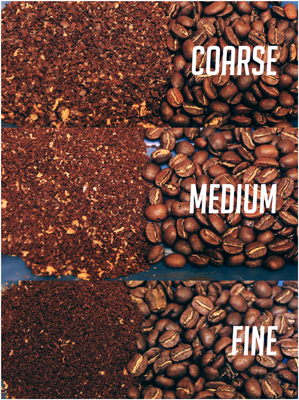
Conical Burrs vs Flat Burr Coffee Grinders - Is a burr grinder really with it?
There are two types of burrs used in coffee grinders – conical and flat. Conical burrs are cone shaped with ridges that pull the beans into the cutting burrs, slicing them into uniform particles. These are commonly found primarily in hand coffee grinders and some low-end domestic models, as well as the very high-end, expensive commercial models. Flat burrs have flat serrated sides and use a shearing effect to break up the beans and are most commonly found in electric grinders for home and cafes, especially in the mid-range.
There are many different theories around different blade styles and which is better, although realistically both are flexible, great quality and create great grind. However, it is unlikely that in the course of choosing a grinder for home that you will have to take this into consideration, because there are two main options for home coffee brewing – hand grinders and domestic electric grinders. Hand grinders most commonly use ceramic conical burrs, while most domestic electric grinders use flat burrs, so it unlikely to affect your decision in choosing a grinder for home.
Ultimately, both types of burrs are great and will produce a fantastic result, with little to no difference in terms of flavour, and there are other factors to consider when choosing a coffee grinder. Other factors to consider include the dosing style of the coffee grinder and how you adjust the grind setting.

Dosing & Non-Dosing Coffee Grinders
“Dosing” refers to how the grind is deposited into the basket after being ground and it’s the one of the biggest influencers on your decision.
A dosing coffee grinder (or doser grinder) deposits the grind into a round container that has six segmented sections on the bottom designed to hold and deposit approximately 7g of grind (this can be adjusted in some coffee grinders). The barista then uses a handle or lever to distribute the coffee grind into the basket. This is known as manual dosing and it is a valuable skill to have as a barista. However, the domestic market trend is now predominantly focused on non-dosing grinders.
A non-dosing coffee grinder (or doserless grinder) can dispense coffee in two ways: depositing the grind into an internal container and deposits into the basket from there, or, dispenses grind directly into the basket.

Stepped & Stepless Adjustment
Now let’s talk about adjusting your coffee grinder! There are two styles of adjustment used in coffee grinders: stepped and stepless.
The stepped adjustment is generally more popular than stepless adjustment, largely because stepped adjustment coffee grinders have a lock-in design. This means you have greater control of adjustments and those adjustments will be locked into place and won’t change during operation. There are two types of stepped grinders:
-Self-holding – allows you to make adjustments one level at a time and you’ll hear or feel a click as the adjustment locks into place with each level.
-Lever release – requires you to push down a release lever then turn the bean hopper to adjust the setting. Once you stop pushing this down it will snap back into place and lock the adjustment in.
Stepless adjustment coffee grinders are used because they have an extensive number of settings for adjusting your grind. This type of coffee grinder is generally better for espresso machine and commercial locations, who can make use of numerous grind options and often require minute adjustments to cater for external factors that affect the grind. Stepless coffee grinders do not have preset spots or reference points and don’t lock in like stepped grinders, definitely designed with professionals and commercial locations in mind.
IMPORTANT TIP FOR GRINDING: remember to keep your grinder running while you adjust the setting finer or coarser. This is just in case there are any stray coffee beans in the grinder, which can get stuck or put unnecessary stress on your grinder.
Recommended Coffee Grinders For Home
Here at Crema Coffee Garage we have a broad range of domestic and professional-quality coffee grinders. Over the years, we’ve experimented a lot and established what works best for different methods and environments.
Below we’ve highlighted the main grinders that we prefer to work with, whether it’s for home or a commercial environment, all of which are available through our online store.
COMPAK
Applying the latest technological advancements into their designs and utilising renowned industrial designers, Compak continues to evolve year after year! The company produces fantastic grinding solutions that customers love for both the domestic and commercial markets. Compak have a wide range of grinders from low volume use, right through to mass production, that are easy to use and straightforward to adjust.
Recommended models for home: Compak k3 Push, K3 Elite PB & K3 Touch
MAZZER
MAZZER LUIGI S.R.L. was established in the 1950s as a precision machine workshop and became a leading manufacturer of commercial coffee grinders and grinder-dosers. Mazzer is always studying and developing new products to keep up with market demands, while still producing grinders with all the elements that first made it a global sensation. Mazzer is often demanded by baristas and business owners, and the company has made a name for itself as a quality manufacturer.
Recommended models for home: Mazzer Mini Manual & Mazzer Mini Elec A
QUAMAR
Quamar create elegant designs with strength and simplicity as their key features. Their innovative designs will satisfy the most pedantic baristas and have made the company a world leader in coffee grinders. These grinders have pushed their way onto centre stage by presenting the coffee industry with a robust, reliable and economical solution to quality coffee grinding equipment.
Recommended models for home: Quamar Q50 Push & Quamar Q50 Electronic
EUREKA
Eureka was founded in the 1920s in Florence by Aurelio Conti and is a company that leads in the design and manufacturing of modern and elegant coffee grinders. All their coffee grinders are hand-assembled in Florence and is the perfect melding between industrial innovation and artisanal knowledge.
Recommended models for home: Eureka Mignon
ECM
ECM Manufacture GmbH was founded in Germany over 25 years ago by Wolfgang Hauck. The company hand crafts their domestic range of espresso machines and coffee grinders in Italy and Germany, designed to produce excellent espresso. The quality of the product this company produces has made it a leader within the coffee industry.
Recommended models for home: ECM C-Manuale, S-Automatic 64 & V-Titan 64
COMANDANTE HAND GRINDER
For customers using alternative brew methods at home and who don’t quite need the volume that an electronic grinder can produce, it’s best to invest in a top- quality hand grinder like Comandante. Comandante is a German company that designs manual coffee grinders specifically for the specialty coffee market. The quality of engineering and crafting that goes into the making of each unit is unparalleled, not to mention the unique burr set used in the C40 Nitro Blade grinders – nitro-hardened steel that uses a uniquely designed geometric shaped burrs for ultra-precise grind capabilities.
Recommended models for home: Comandante C40 original
If you are looking for a home coffee grinder and need some help, have a chat to your Broadmeadow or Enoggera sales staff today!

